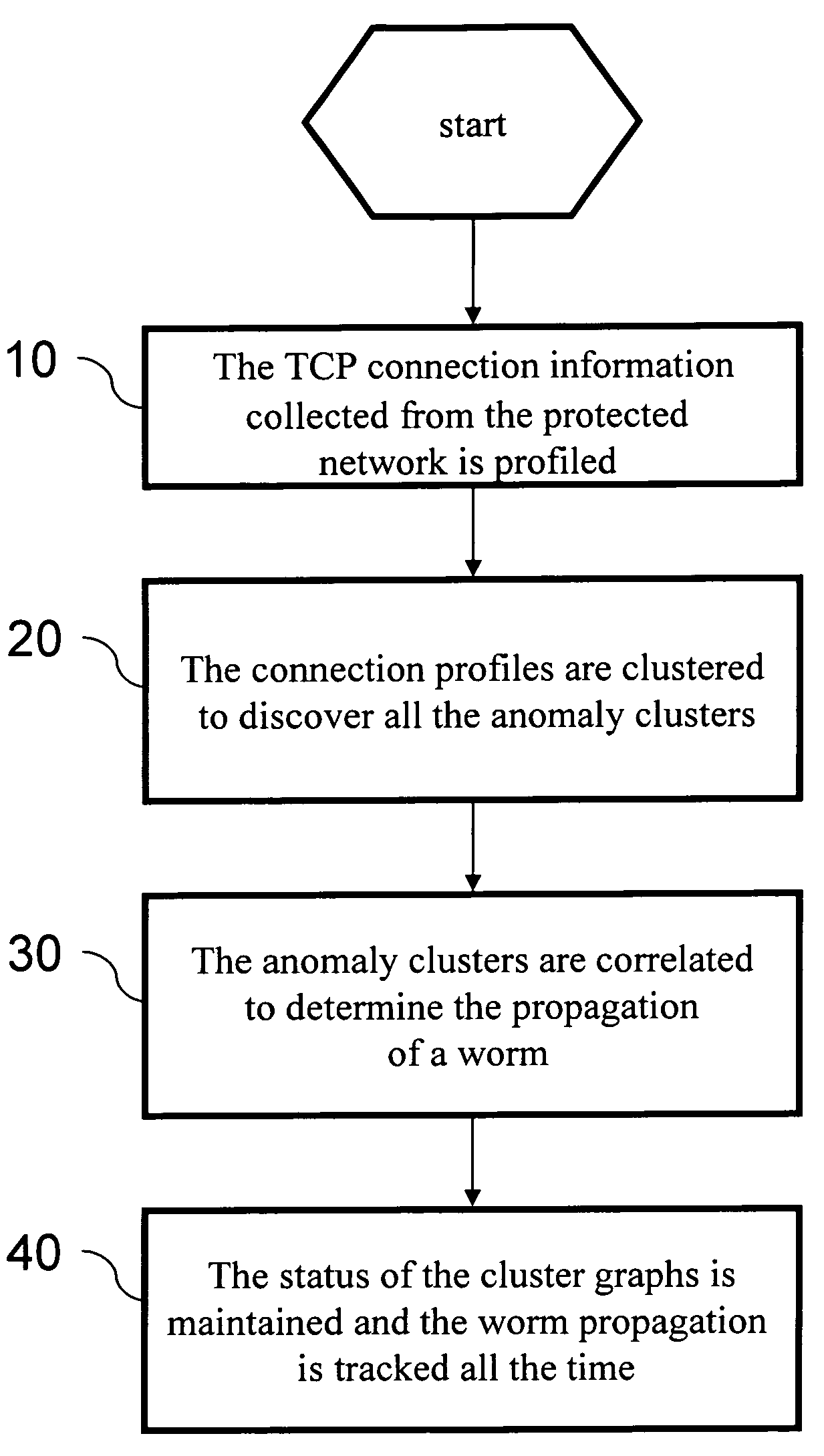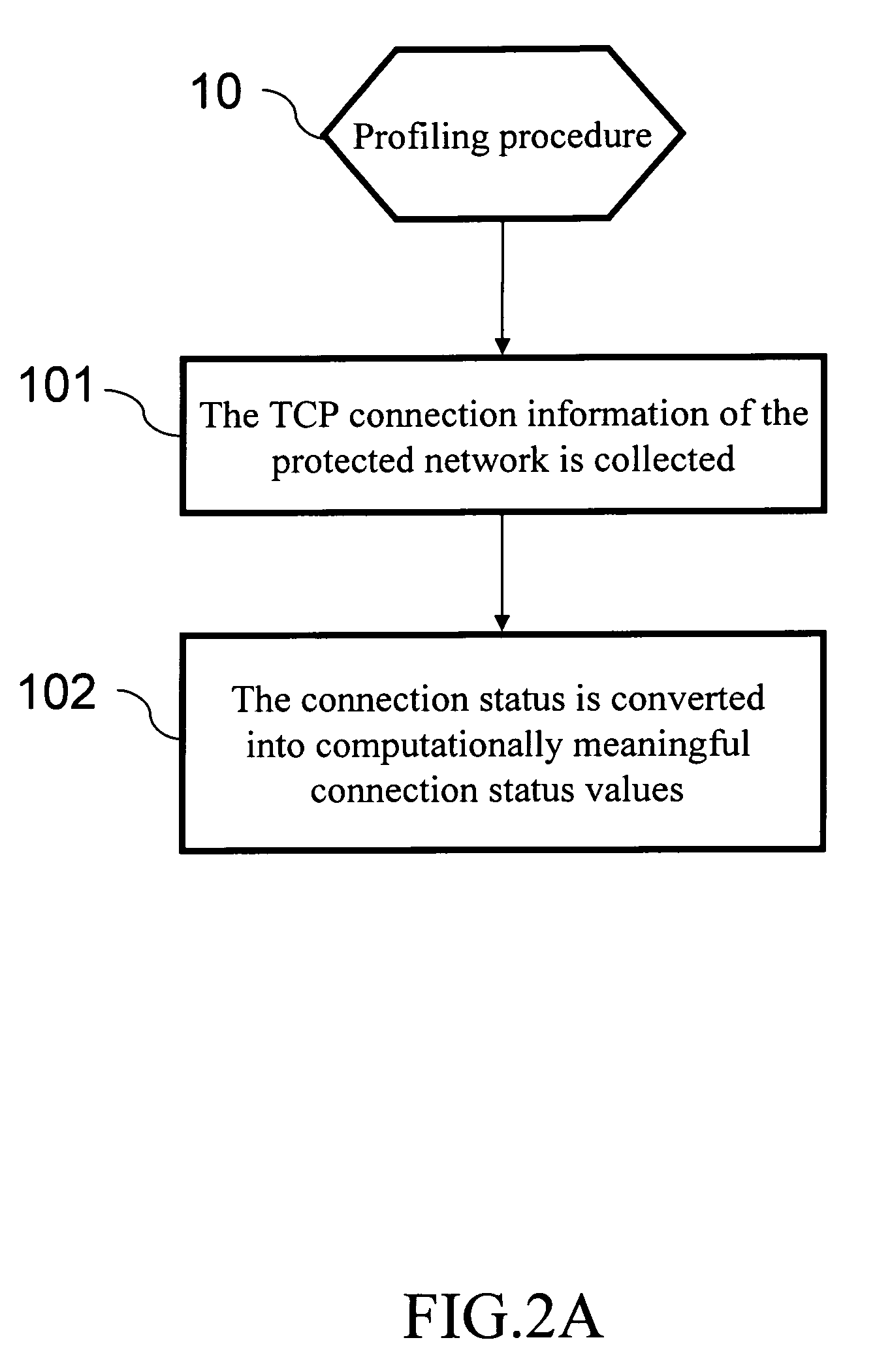Method of detecting network worms
a network worm and detection method technology, applied in the field of computer viruses, can solve the problems of insufficient speed and breadth of virus propagation as well as worms, inability to detect/correct errors, and inability to detect unauthorized memory use,
- Summary
- Abstract
- Description
- Claims
- Application Information
AI Technical Summary
Benefits of technology
Problems solved by technology
Method used
Image
Examples
Embodiment Construction
[0019]Worm programs are usually very complicated; their behaviors are also versatile. In the beginning, they only scan others using some specific ports. However, their subsequent variations often randomly open local ports and their targets are also random. There may be many combinations of attack methods. It is thus very difficult to detect them. However, one can still find a solution by studying the basic principles of worm propagation.
[0020]We have studied all the known worms (starting from the CodeRed worm discovered in 2000.) After analyzing and classifying their behaviors, we have found their fundamental behaviors and devised a detection method accordingly. The common behaviors of the worms are as follows. In order to self-propagate and actively implant themselves to computers on the network, the worm has to take advantage of the vulnerability of those computers—the security flaws of network service software. Therefore, it has to try the weak points of the computers on the netw...
PUM
 Login to View More
Login to View More Abstract
Description
Claims
Application Information
 Login to View More
Login to View More - R&D
- Intellectual Property
- Life Sciences
- Materials
- Tech Scout
- Unparalleled Data Quality
- Higher Quality Content
- 60% Fewer Hallucinations
Browse by: Latest US Patents, China's latest patents, Technical Efficacy Thesaurus, Application Domain, Technology Topic, Popular Technical Reports.
© 2025 PatSnap. All rights reserved.Legal|Privacy policy|Modern Slavery Act Transparency Statement|Sitemap|About US| Contact US: help@patsnap.com



